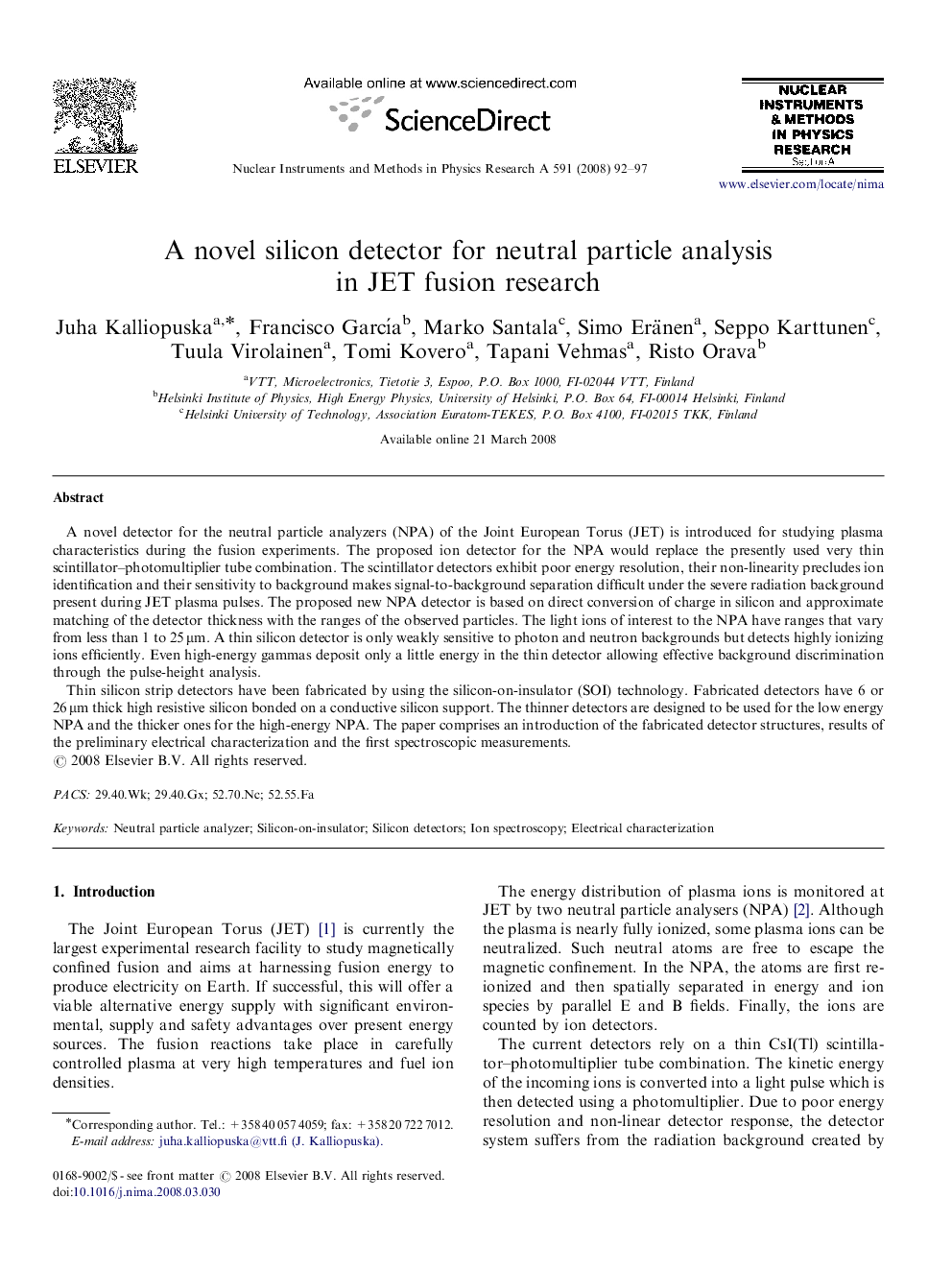| Article ID | Journal | Published Year | Pages | File Type |
|---|---|---|---|---|
| 1828449 | Nuclear Instruments and Methods in Physics Research Section A: Accelerators, Spectrometers, Detectors and Associated Equipment | 2008 | 6 Pages |
A novel detector for the neutral particle analyzers (NPA) of the Joint European Torus (JET) is introduced for studying plasma characteristics during the fusion experiments. The proposed ion detector for the NPA would replace the presently used very thin scintillator–photomultiplier tube combination. The scintillator detectors exhibit poor energy resolution, their non-linearity precludes ion identification and their sensitivity to background makes signal-to-background separation difficult under the severe radiation background present during JET plasma pulses. The proposed new NPA detector is based on direct conversion of charge in silicon and approximate matching of the detector thickness with the ranges of the observed particles. The light ions of interest to the NPA have ranges that vary from less than 1 to 25 μm. A thin silicon detector is only weakly sensitive to photon and neutron backgrounds but detects highly ionizing ions efficiently. Even high-energy gammas deposit only a little energy in the thin detector allowing effective background discrimination through the pulse-height analysis.Thin silicon strip detectors have been fabricated by using the silicon-on-insulator (SOI) technology. Fabricated detectors have 6 or 26 μm thick high resistive silicon bonded on a conductive silicon support. The thinner detectors are designed to be used for the low energy NPA and the thicker ones for the high-energy NPA. The paper comprises an introduction of the fabricated detector structures, results of the preliminary electrical characterization and the first spectroscopic measurements.
